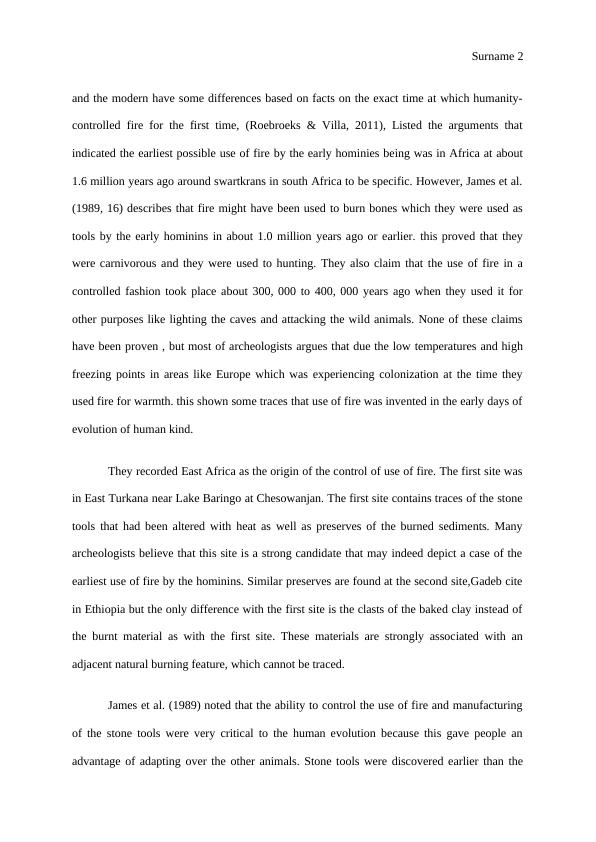Evolution of Fire: Impact on Human Evolution and Adaptation
Investigating the use of fire by early hominins and its impact on human evolution and colonization outside of Africa.
8 Pages2462 Words408 Views
Added on 2022-10-02
About This Document
This article explores the impact of fire on human evolution and adaptation. It discusses the earliest sites of controlled use of fire and how it affected the biological, social, and cognitive capabilities of early humans. The article also examines the cooking hypothesis and how the invention of fire and cooking led to the development of larger brains and increased social cognition.
Evolution of Fire: Impact on Human Evolution and Adaptation
Investigating the use of fire by early hominins and its impact on human evolution and colonization outside of Africa.
Added on 2022-10-02
ShareRelated Documents
End of preview
Want to access all the pages? Upload your documents or become a member.
Homo Erectus in Asia: Anatomical Structure, Discovery, and Replacement
|16
|2797
|299
The Dawn of Human Culture
|7
|1627
|21
Earliest evidence of controlled fire & human evolution related to innovation of fire
|5
|1025
|433



